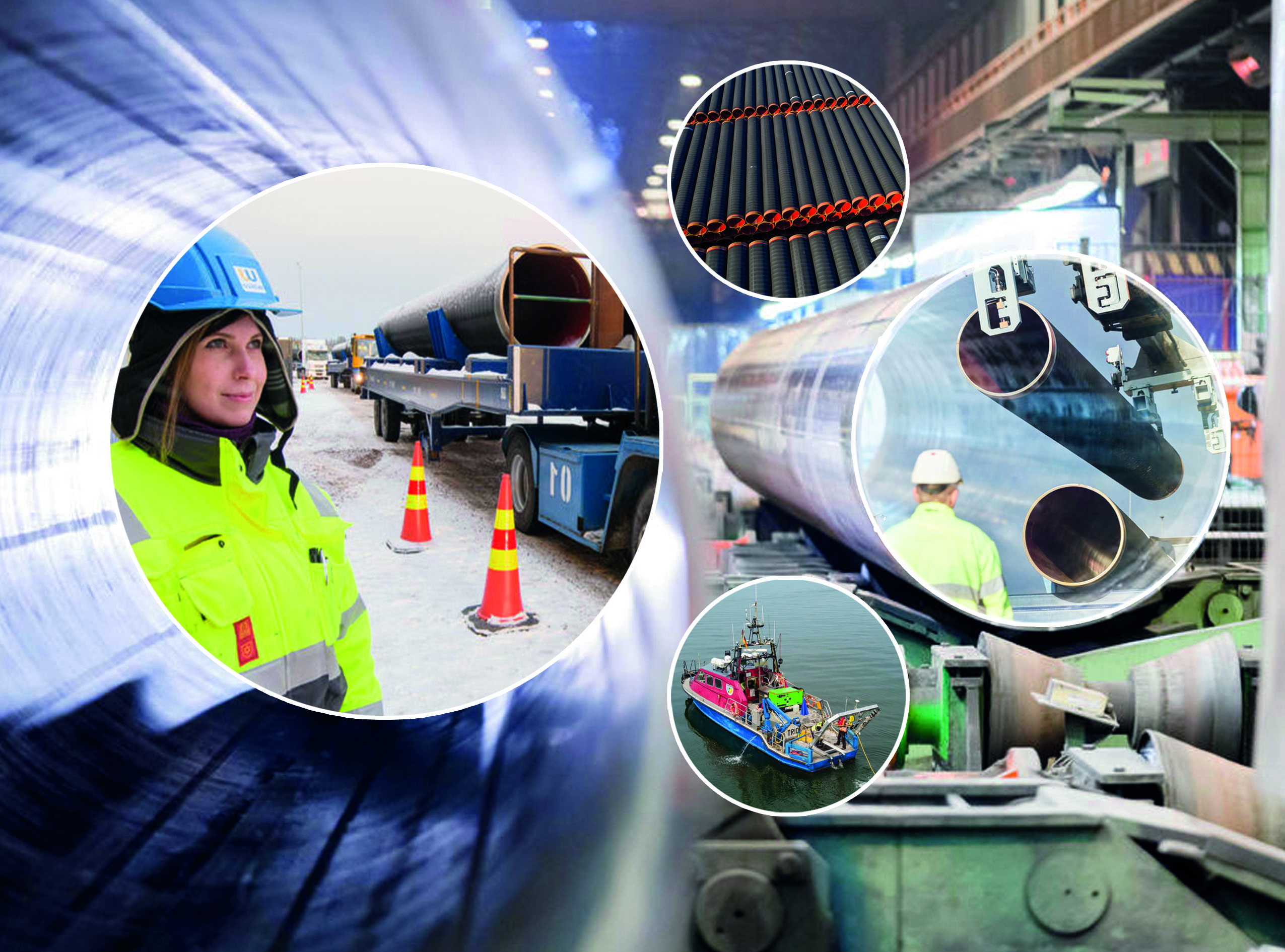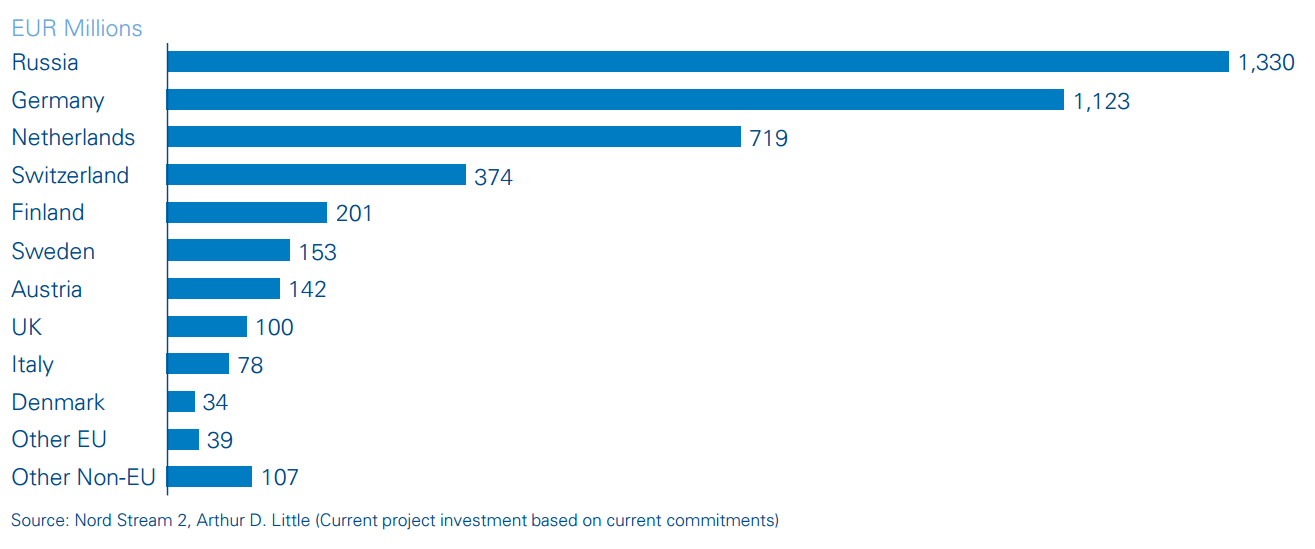
The Nord Stream 2 project aims to provide the means for safe and secure supplies of natural gas to the European gas market. The EU market, covering 28 countries, is characterized by decreasing indigenous production, an increasing requirement for gas to support the transition to sustainable energy supplies, and increased competition between different sources of natural gas. The Nord Stream 2 pipelines will complement two existing pipelines through the Baltic Sea, and add 55 bcm of design capacity. The total investment, including financing costs of the pipeline, is expected to amount to €9.5 billion. These funds will cover materials for the pipeline itself and its landfall facilities, as well as the services necessary for completing the planning, permitting, construction and commissioning of the pipeline. In selecting suppliers and contractors, Nord Stream 2 has chosen the most cost efficient options for services and materials, while meeting strict quality criteria. This means that investments will be spread over many different countries. So far, there is little detailed information on how an investment of this magnitude will affect specific sectors and countries in Europe. For this reason, Nord Stream 2 has commissioned Arthur D. Little to undertake a broad, independent assessment of these topics. This study will cover the direct, indirect and induced effects on the European economy and those of the directly involved countries of the actual investments in the pipeline.
In addition, the true economic, competitive and emissionsrelated impact of the project on the wider European economy could benefit from additional analysis.
In this the study, Arthur D. Little has mapped the investments as of July 2017 in the Nord Stream 2 project. Arthur D. Little has analyzed the sources of origin and value chains involved in providing the major contributions to the project. In doing so, the aim is to provide a clear and transparent picture of all the economic activities required for building and operating the pipeline. The investment was thus broken down into value streams flowing to different countries and areas of the respective economies, in order to understand how and why each involved country contributed to and benefits from the project.
Once that picture had emerged, an economic modeling tool to analyze the wider economic implications, involving both employment and wealth, was applied to the countries involved.
This analysis is based on the accepted theory that any economic activity creates ripples of value creation through its:
- Direct effects (activities related directly to the investment itself, such as construction, provision of materials, etc.)
- Indirect effects (all activities serving the directly involved parties – subcontractors, raw material providers, etc.)
- Induced effects (all induced household spending of the recipients of wages and salaries related to the project, including those of subcontractors, raw-material providers, and service providers
To undertake this analysis, Arthur D. Little has, for the major affected economies, used a widely recognized, commercially available economic modeling tool (IMPLAN), which allows estimation of direct, indirect and induced effects in terms of value creation and job creation. This tool has been in use by US government departments, institutions and academia for decades (first developed by the USDA in 1976). Originally covering the US alone, it now contains databases for most countries and economies of the world. It allows the user to model the effects of a single economic event on the economic system of a contained region, such as a country.
For the remaining countries, the impact has been approximated by using general multipliers based on countries with similar or at least comparable economies. (Please see below under “Predicted economic impact by country affected”.).
The basic data regarding the investment of the project has been provided by Nord Stream 2 AG. Arthur D. Little has, for this purpose, had as much insight into Nord Stream 2 procurement and accounting data as can reasonably be expected, given commercial confidentiality considerations. Nord Stream 2 procurement officers and others have worked diligently on the team to create as transparent and complete a picture as is possible at this stage of the project, when all funds have not yet been contractually committed. A full assessment of the total economic impact will be undertaken after the project has been completed and all data is available. In assessing the plausibility of the results, the report’s findings were subjected to the scrutiny of a wide panel of Arthur D. Little economists, pipeline engineers and industry experts.
Statistical overview of expected economic benefits
The two figures below provide an overview of the results of the analysis undertaken, clearly showing that Russia is the largest single country benefiting from the investment in Nord Stream 2, followed by Germany. It also shows that many different countries, within the EU as well as outside of it, are recipients of investment capital. The second figure shows the direct investments of the first graph complemented by indirect and induced effects, adding up to the total benefit received.





